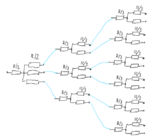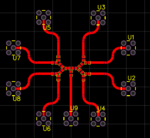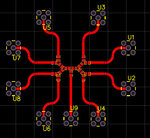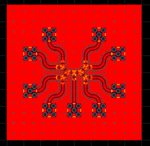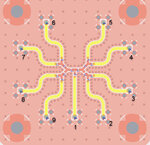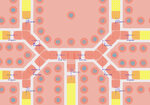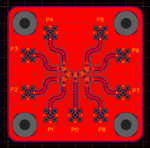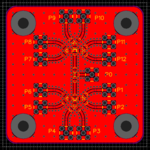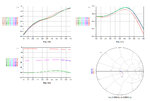alftel
Member level 1

I know that this topic was discussed somewhat in a past, but here is a challenge that I am facing right now - I am in a need to design 12-way RF resistive splitter for 2GHz - 6GHz band. In a recent past I designed one using Susumu 2-way resistive splitter parts hat are rated up-to 10GHz, and design has 4-layer FR4 board where signal and ground layer are separated by 0.2mm, which (as far as I understand) is enough to support frequencies in question. Design perform more or less ok , but I have a desire to create a simple star 12-way splitter and utilize 201 or 402 resistors 9my current understanding is that by using these package I can avoid earlier suggested technique of placing multiple resistors on top of each other in order to drive inductive components down). So, lets say for sake of argument that I will use 201 packaging and whatever substrate suitable (Rogers or 4-layer FR4 as before). Issue that I have (looks like) is to layout 12+1 resistors in a star manner - they form some sort of a circle being adjusted back-to-back, plus I am afraid that by placing them too close (like silkscreen to silkscreen style) may create an issue for manufacturer. Can somebody suggest a layout sketch for resistive RF splitter star topology that has more then 4-5 ports? Is it ok to place them in a round manner close to each other? Should this "circle" trace be the same 50 ohm impedance?
Any advice will be greatly appreciated.
Any advice will be greatly appreciated.


